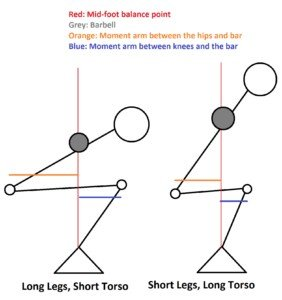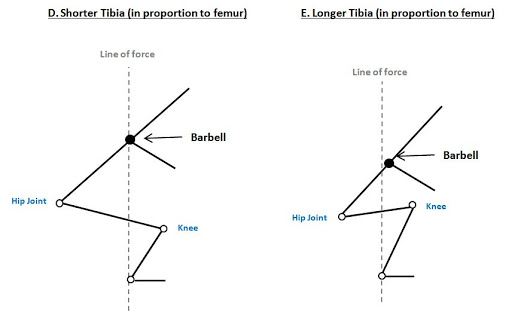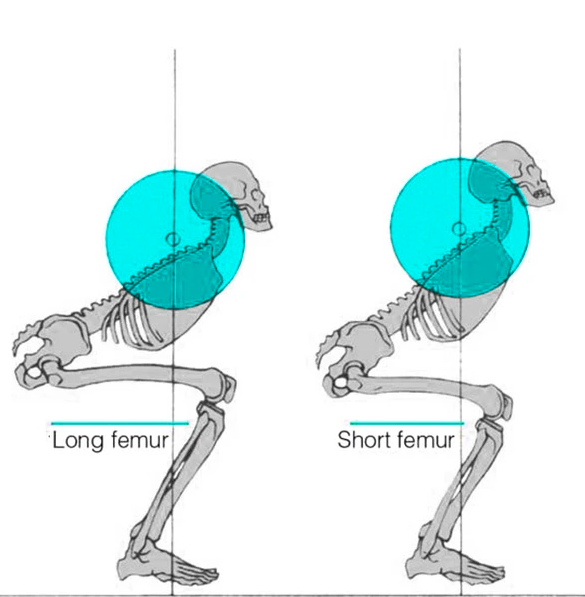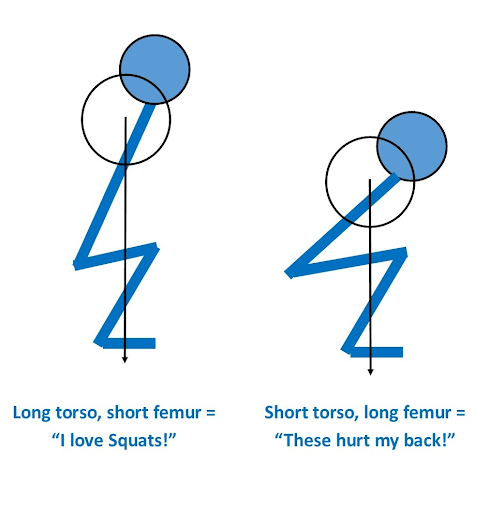How Can I Squat Deeper?
Squat is one of the most commonly asked questions from our clients
- Why can’t you squat?
- Is my squat technique correct?
- Why do I feel it in my back instead of my legs?
- I Don’t feel my glutes muscles working at all when i squat
Here’s the thing that no one ever talks about the fact that squat loads up on different muscle groups/ structures depending on the person’s body type.
Hence, it’s normal for different people doing the same squat but feeling at a completely different muscle group just because their body build is different!
All these factors influence the quality of squat for different individuals. Watch our youtube video so you can understand how different body structure will interrelate to the ability to squat.
- Centre of mass has to be over your feet to stay balance
- Dist Knee to line of gravity
- Distant of Hip to line of gravity
- Amount of Trunk leaning over the line of gravity

Load on knee depends on how far your knee is when you squat to the line of gravity
So if your knee is far away from the line of gravity the higher the load
It is the same concept for Load of the hip depends on distance from your hip to the line of gravity
The load of your back depends on how far the trunk leans over the line of gravity.
As the hip muscles are generally stronger than knee muscles; the lever arm from hip to centre is generally larger than the lever arm from knee to the centre.
Normally the ratio should be 2:1 for an ideal squat BUT
With different people being build differently it changes this ratio and your ability to squat
The amount that your trunk have to lean forward depend on the lever arm of the hip to the line of gravity
The lesser the length on hip to centre the less your trunk has to lean, the longer the length of hip to centre, the more the trunk has to lean to stay balanced.
1. People with limited dorsiflexion ability (tightness or joint mobility is limited)- affect your ability to move your tibia forward, that in turn change the lever arm for your knee to the line of gravity
2.Proportion of Femur to Tibia
Short Tibia in proportion to femur, ability to squat lower; the back need to bend way forward to keep centre of mass over the feet (in order to stay balance) because the length of knee to line of gravity is really short
Long Tibia in proportion to femur, the line of gravity to the knee is longer hence the person doesn’t have to lean as far forward to keep their balance.

Because of these differences in lever arm it makes how each individual feels different when they are doing squat exercises.
LONG FEMUR compared to tibia?

If you have a long femur in proportion to tibia, your lower back will need to lean significantly forward to keep the equilibrium, in order to get any lower you might feel like you are falling backwards. You might just physically can’t do it because of the proportion of your build.
If your trunk is short and you have a long femur it makes it even worse as you can compensate by leaning too far forward so you will be even higher in their squat and you will feel the load a lot on your hip and lower back.

All these factors are interdependent and it will affect how each individual feels about squat and the ability of each individual to squat.
So if you are really struggling with your squat technique even though you’ve been working on your hip flexibility, your ankle flexibility, your back, glute and leg strength and you are wondering why you are still struggling with squat, this might be the reason and for that i say, DON’T SWEAT IT!
Squat is a good exercise to work on all different muscles groups but so is leg press, back extension, lunges, deadlift, hip trust etc. there are plenty of other exercises you can do that will work the same muscles group as squatting does. If you really struggle in a squat and it is frustrating you, don’t sweat it, it’s not the end of the world, it’s just not the right exercise for you!
Here at Capital Physiotherapy, our physiotherapists are the experts in helping you to fix your posture/alignment issues as well as all the discomfort that comes with it!
We can help you break this habit and lead a healthier and pain free lifestyle.
Our physiotherapist will be able to give you individualised advice/ treatment plan that is tailored for your particular needs.
At Capital Physiotherapy, your initial appointment is 40-60minutes long. This allows our physios to be thorough in their assessment, as well as giving them enough time to give you treatment on the same consultation!
For physiotherapy related queries and concern, visit us at any of our clinics near you or do an online booking with us. We also provide Telehealth Consultation for your safety and convenience during this pandemic.

